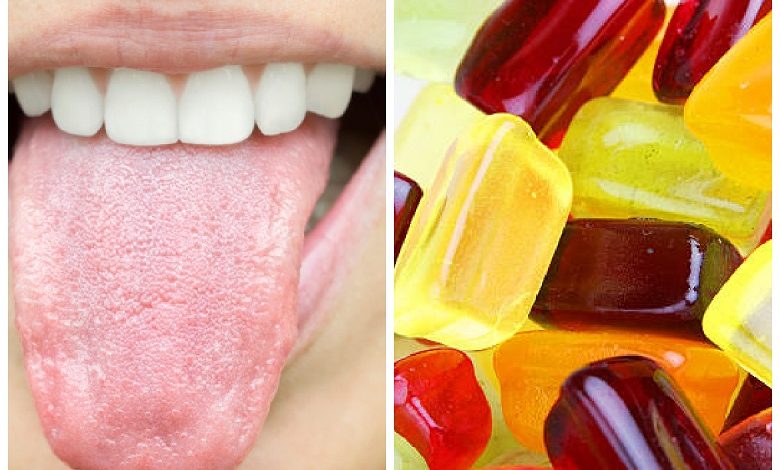Eating less sugar: 6 easy ways to rebuild your taste buds

You may want to consume less sugar, but despite your good intentions, the result is disappointing. The percentage of obesity is not decreasing. The incidence of diabetes is multiplying. Recent studies have shown that diabetes deaths can be four times higher than previously thought.
Why do we face such difficulties in reducing sugar consumption? Can’t we enjoy sweets in moderation, as the food companies advise us? Unfortunately, people seem to be unable to control their sugar consumption.
Sugar alters hormonal response and brain function so that we tend to consume more of it. For example, the level of the brain neurotransmitter dopamine, which makes us feel pleasure, changes in response to sugar intake. At the same time, the hormone leptin, which suppresses hunger and signals satiety, is not released in response to sugar as is the case with other foods.
6 tips for retraining your taste buds to reduce sugar intake
Another fact is the insidiousness of sugar. First, there are foods that we often think of as “healthy,” but they contain added sugar : breakfast cereals, canned fruits, fruit juice, and crackers are just a few examples.
Then some foods are not sweet but contain an incredible amount of extra sugar: ketchup, canned soup, oatmeal, hot sauce, and iced tea.
Next on the list are refined grains, which are converted into sugar in the body. Anything that contains wheat, corn, rice, or other grain products undergoes the same processes in the body as a simple sugar, converting to glucose in the bloodstream. From whatever point of view, consumption of such foods (bread, crackers, chips, pasta, etc.) is just as bad for the metabolism as the absorption of sugar.
And finally, there are sugary foods in which you expect sugar: cookies, ice cream, confectionery, chocolate, soda, etc. Based on data gathered from grocery magazines, we know that many people eat far more of these foods than they realize.
Research shows that the more sugar we eat, the more it takes us to experience the same feeling of “sweetness.” Food manufacturers are aware of this and are working to make processed foods “super tasty” to meet increased taste preferences to lure as many people as possible and strengthen their cravings.
It also works the other way around: By cutting back on sugar, you can retrain your taste buds. In a recent study, experts who reduced their sugar intake by 40 percent rated the sweetness of the raspberry-flavored pudding and soda 40 percent higher than the control group.
Scientists have concluded that the less sugar you eat, the more sensitive you become to the taste of sweets, from which they conclude that it is possible to satisfy cravings for sweets with less sugar.
This study indirectly points to the possibility of literally retraining the taste buds to perceive and enjoy foods with less sugar. The trick is that it takes time: on average, it took two months before the group of people who reduced their sugar intake noticed any difference in the sensation of sweetness. It did not intensify until the beginning of the third month.
Eliminating sugary, sugary foods and processed carbohydrates from your diet can take a while if you’ve consumed them regularly in the past.
Here are six of the best tips for retraining your taste buds to reduce sugar intake to healthier levels. Some of them are simple – don’t add sugar to the coffee. Others are more complex (prefer protein foods to carbohydrates) and tend to require consistent habits.
Don’t add sugar to foods or drinks
Sometimes these are little things that we forget about! If you are currently drinking tea or coffee with sugar, then it’s time to stop. One alternative is zero-calorie natural stevia. It is produced from the South American plant of the same name and is metabolized in the liver and kidneys.
Instead of stimulating the release of insulin like other sweeteners does, stevia improves blood sugar tolerance. This makes it an excellent remedy for anyone looking to avoid sugar consumption, and it is safe for people with diabetes. Do not consume large amounts of it because the effects of large doses on the body have not yet been studied.
Replace processed carbs with complex carbs
About 99 percent of processed and packaged food contains added sugar. Eliminating it from the diet is the first line of attack in the fight to reduce sugar intake. Substitution of processed carbohydrates will have other positive results: a recent study found that when women consumed berries instead of sugary “fruit” candies as a snack, they ate less pasta at dinner, reducing the total calories by 135 points, resulting in burned about 0.5 kilograms of fat for a month.
Complex carbohydrates are natural foods that are higher in fiber. They are digested more slowly, resulting in less high blood sugar levels. We are talking about fruits, sweet potatoes, lentils, leafy greens, non-hybrid cereals (millet, buckwheat), oats, and other colorful vegetables.
Read labels on all foods
You can’t abstain from processed carbs on rare occasions. Check the ingredient list for any of the following sugar variations: evaporated sugarcane juice, high fructose corn syrup, corn syrup, beet sugar, brown rice syrup, agave, honey, molasses: brown sugar and fruit juice concentrate.
Of course, sometimes it’s just not possible to completely abstain from sugar. If so, you can start limiting his additional intake of 100 calories per day, which equates to about 24 grams or 6 teaspoons – the limit recommended by the American Heart Association (AHA).
Plan meals based on whole protein instead of carbohydrates
Most Westerners plan their meals based on carbohydrates. Because most of these carbohydrates are processed, people consume much more sugar than their digestive system can painlessly process.
Based on the study results, Americans get 30 to 50 percent of their calories from foods containing corn, rice, or wheat. A smart alternative is to plan your diet based on whole protein foods such as meat, eggs, fish, beans, and dairy products.
Whole protein is processed differently from carbohydrates, which results in more energy being burned during digestion, which has a beneficial effect on hunger and appetite.
Avoid all sugary drinks and fruit juices
Sugary drinks and fruit juice are perhaps the worst ingredients in the diet. There is strong evidence to link to increased fat gain and diabetes because liquid sugar quickly converts to fat and alters insulin sensitivity.
Fruit juices are also harmful. Although they come from a seemingly beneficial source of sugar, fiber is removed from the juice, causing the body to treat it like soda, which means a sharp rise in blood sugar and insulin levels. Any excess calories are quickly stored as fat – often in the organs and abdomen.
Minimize your fructose intake
The two main types of sugar that are of concern to us are glucose and fructose. Glucose is converted to glycogen and used by cells for energy. It is not very sweet on its own, but it becomes sucrose and is very sweet when combined with fructose. Fructose is extracted from fruits and vegetables. It was initially considered a great alternative to sucrose because it does not affect insulin.
A recent study found that consuming foods or drinks with added fructose slows down the metabolic rate and inhibits fat burning in the body. Small amounts of fructose, such as those found in fruits and vegetables, are not a problem; however, processed carbohydrates and sugary drinks are usually packed full of fructose, which means that the average person consumes too much of it.
Get fructose from fruits and vegetables and avoid other sources. Fruits and vegetables are rich in fiber, vitamins, and antioxidants, making them an essential part of the diet. Fructose-reduced foods include most berries, nectarines, grapefruits, avocados, and tomatoes. Bananas, apples, and pears are ranked at the other end of the scale (with a higher content).




